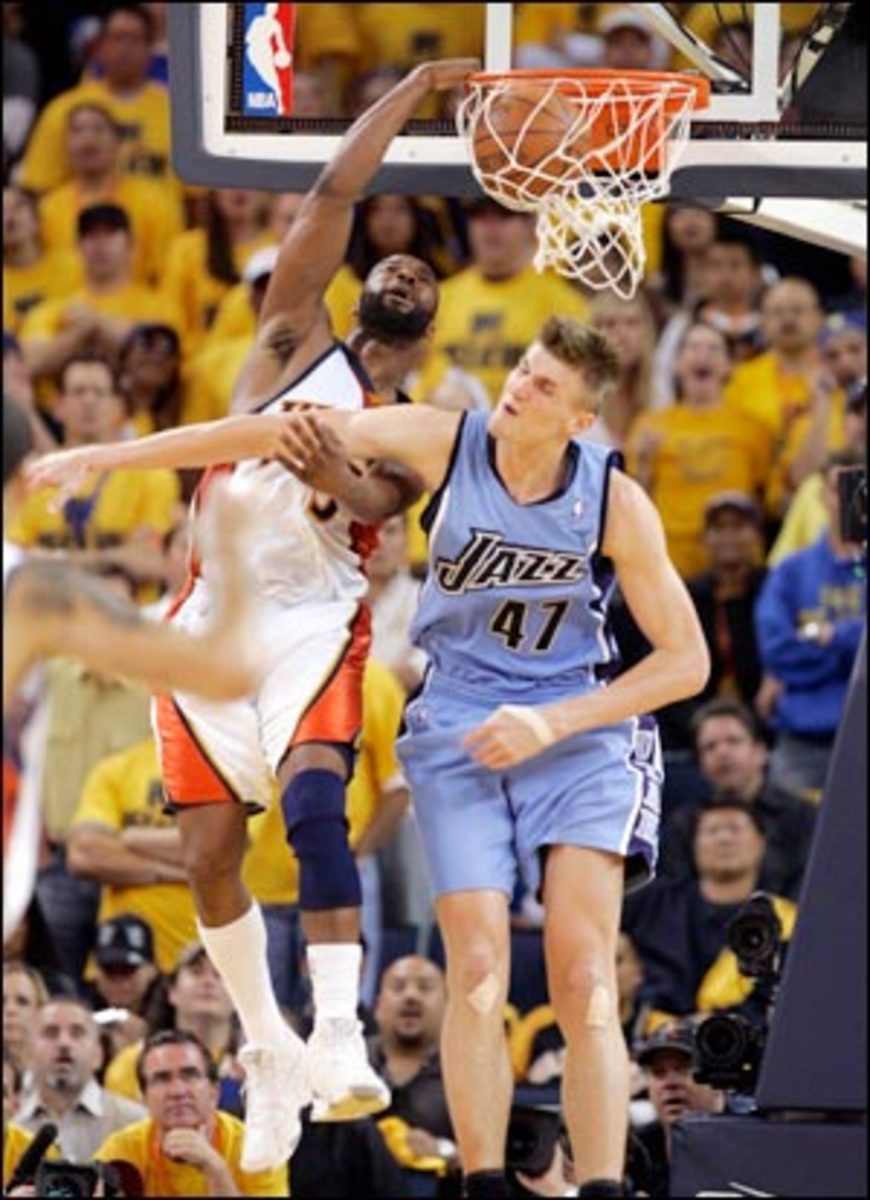
Anatomy of a dunk
Most dunks are spontaneous, born of opportunity: a breakaway, a missed shot that caroms just so, a baseline drive with no weakside help. When the Warriors' Baron Davis threw down on Utah's Andrei Kirilenko in Game 3 of a second-round playoff series last spring, however, the play was premeditated.
With the Warriors running a lot of high pick-and-rolls, Davis drove for a layup late in the fourth quarter and noticed the Jazz gave him ample room. As he jogged back on defense, he made a decision. "I thought, I'm going to come back and do the same thing, only I'm going to dunk it this time," he says. "They keep giving me the space, and they're trying to meet me at the rim. I'm just going to attack harder."
On the next play, he did just that. It's not quite the same as a "called shot" -- or would that be a prophesied posterizing? -- but it's pretty close. The Warriors ran "one down," a play where the five man, in this case Andris Biedrins, sets a screen at the top of the key. Davis took a handoff from Biedrins, then turned the corner to the left.
Immediately, he looked for Kirilenko, who was still on the other side of the lane. Davis knew right away he had a chance. "Once you see a defender under the basket or he's coming in late, and you got enough room to take off and know you can land comfortably, that's what automatically triggers it for me," Davis says.
The next goal: Make it to the block before launching. "It's about making sure I'm close enough that I won't get hung," he says with a laugh. "Back in my younger days I'd take off from anywhere. I'd take off from the free-throw line if I had to." Here's what happened next. (And by the way, my favorite part of this is the reaction from HubieBrown, who is in the middle of a hoops strategy soliloquy when Davis jams. Sayeth Hubie: "Hell-o!")
Part of what made the dunk so surprising to Davis' teammates, who can be seen flailing about, was that, despite being a renowned leaper early in his career (as evidenced here), Davis had rarely dunked as a Warrior. Part of this was due to a career riddled with injuries -- Davis says he didn't even start dunking off of two feet until after tearing his ACL in college, having always been a one-foot jumper before that -- and part of it was that he'd become more judicious about saving energy. "In three years I'd never seen him dunk in practice, not once," Warriors assistant coach Keith Smart says. "And then he goes and does that."
SIDE NOTE: Was it a foul? Though Kirilenko was called for a foul on the play, some people (which is to say, some Jazz fans) believe Davis should have been whistled for putting his off-arm squarely into Kirilenko's mug. According to Warriors staff, a day after the dunk, one of the referees during the game, Jim Clark, was flying out of Salt Lake City when a passenger behind him on the plane held up a newspaper with a photo of the jam and said, "That's a foul." Clark decided to check it out, so he reviewed the game film. Five months later, when he spoke to the Warriors at their training camp, he recounted the story, and his decision remained the same: Davis' arm was part of the natural motion of extension. No foul. In other words: Kirilenko's noggin was guilty as charged.





